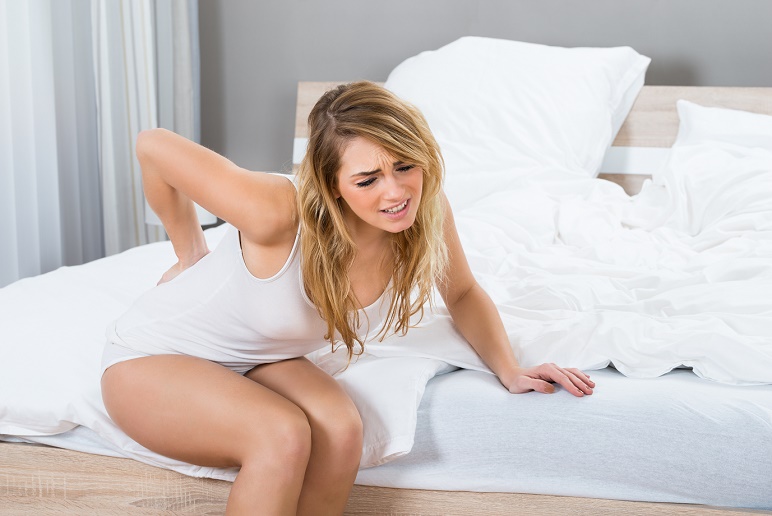Health
4 Risk Factors for Pressure Sores and How to Avoid Them
by Monica Mendoza
For people who are immobilized and confined to a bed or chair for prolonged periods of time, developing pressure sores is a big risk that requires regular preventative measures. Pressure sores, also known as “bed sores” or pressure ulcers, refer to skin tissue that has been damaged due to persistent pressure in one area for extended periods of time, a deterioration of healthy skin due to age, or shear caused by friction between the skin and bed or seating surfaces that result in tearing the skin. These causes of injury are compounded by reduced blood flow needed for healthy skin, and moist or warm surfaces.
Seniors, or patients of any age, who are most at risk of developing pressure sores are those with limited mobility. Risk factors for pressure sores can include, but are not limited to:
- Immobility. Individuals who are confined to a bed or chair for prolonged periods of time are at a high risk for pressure injuries. This is especially true if the patient is not supported by an alternating pressure mattress or other type of pressure prevention mattress that is designed to prevent and manage pressure injuries.
- Decreased sensations. Some medical conditions can result in diminished sensory perception. The patient may not be able to feel pain or discomfort that can prompt her to adjust her position. This lack of self-awareness may cause the patient to entirely miss the first signs of pressure sores.
- Poor nutrition. Having healthy skin is your first defense. If you are not eating right or if you are unable to hydrate well, the skin will be left unhealthy and at a disadvantage when it comes to repairing itself with healthy tissue.
- Blood flow-related illness. Damage to the skin and underlying tissues is more likely to occur if a patient suffers from illness that directly interferes with the normal, healthy blood flow. This condition can be caused by vascular disease, as well as diabetes.
It is essential to catch the signs of pressure ulcers, which often include the following signs:
- Redness or any changes in the skin
- Swelling
- Unusually warm, or cold areas
- Tender areas
- Spongy or hard skin; and
- Visible breakdown of skin tissue
It is important to know that deep pressure sores beneath the surface may not reveal themselves with an open wound. The area of the skin will often appear purple or dark red, or may have a blood-filled blister. Check the entire body each day for these and other signs. Among the particular spots that should be inspected are the shoulder blades, spine, back of the arms and legs, hips, tailbone and buttocks, behind the knees, heels and ankles.
Aside from daily checks, there are other ways to prevent and address the formation of bed sores in a patient who has mobility issues or requires prolonged bed rest. These include:
- Eating properly. Maintain a diet with sufficient amounts of calories, protein, vitamins and minerals to sustain the health of the skin.
- Dehydrated skin is particularly prone to bed sores. The easiest solution is to have the patient drink lots of water.
- Treat the skin gently. Wash the skin with a soft sponge. Exfoliate regularly but avoid harsh scrubbing. Clean and dry the skin, particularly high friction areas like the groin or under the breasts. Apply moisturizer daily. And avoid using talcum powder, strong soaps or other cleansers that can dry out the skin.
- Pick the right clothes. Do not use clothes that are too tight. Select items that do not chafe the skin. Avoid clothes that bunch up or wrinkle in areas where there is pressure on the body.
- Proper hygiene. Clean well after urinating or a bowel movement. Wash the skin and dry it completely. Talk to your health care provider regarding special creams that further protect the groin area.
- Redistribute pressure. Ensure that the patient does not stay in one position for an extended amount of time. Be sure to turn her every 2 to 6 hours to prevent the development of pressure sores and to allow existing ones to heal better. It may be necessary to consult a physician or wound care specialist for a recommended turn schedule.
- Get support surfaces. Specialty mattresses and seating cushions do wonders when it comes to preventing pressure sores. If the patient spends most of his time on a wheelchair, consider using a foam or gel seat cushion to reduce pressure on the skin. If the person is confined to a bed, use a pressure prevention mattress, and consider adding absorbent pads to reduce wetness. Place soft pillows or body positioners in between high friction parts of the body or against the mattress. Also, ensure that the sheets and clothes are always dry and smooth.
Prevention is always better than cure when it comes to bed sores. Avoiding bed sores may seem like a daunting task, but it is far easier than watching your loved one suffer and seeing their health condition deteriorate due to the presence of pressure injuries.
About the Author
Monica Mendoza is the manager for a fortune 500 company. She counts communication coaching and personality development among her passions. In her spare time, she engages in writing, gardening, surfing, and hiking.



